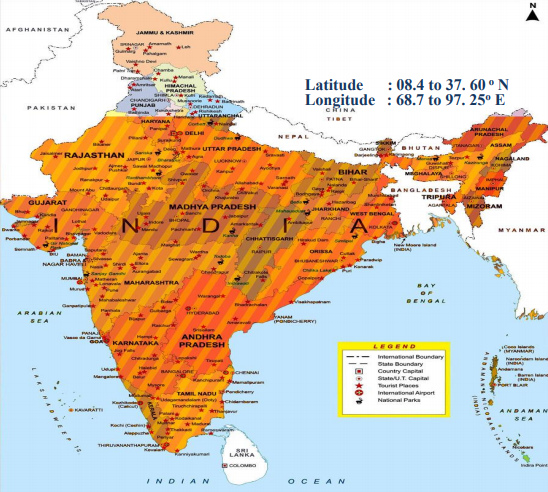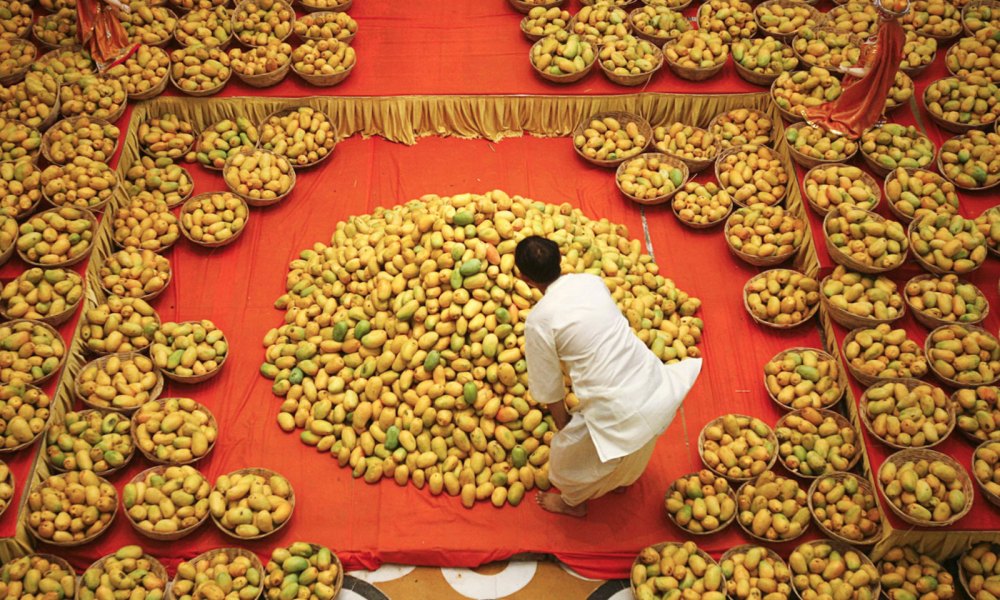HISTORY OF MANGOES
• Mango, Mangifera Indica, is the Native and natural fruit of India.
• The exact origins of the mango are unknown, but most believe that it is native to
Southern and Southeast Asia believed to be in east region of India & Burma
(Myanmar)
• Mangoes have been grown in India for over 4000 years.
• Reference to mangoes as the "food of the gods" can be found in the Hindu Vedas.
• India consider the mango it’s national fruit.
• In 1889, the USDA introduce grafted variety of India called the “Mulgoa,” also known
as “Mulgoba” in the US.
• The exact origins of the mango are unknown, but most believe that it is native to
Southern and Southeast Asia believed to be in east region of India & Burma
(Myanmar)
• Mangoes have been grown in India for over 4000 years.
• Reference to mangoes as the "food of the gods" can be found in the Hindu Vedas.
• India consider the mango it’s national fruit.
• In 1889, the USDA introduce grafted variety of India called the “Mulgoa,” also known
as “Mulgoba” in the US.
MANGOES IN THE WORLD
• Yep! Mango is the world's most consumed and number one selling fruit in the world.
• Mango cultivation has now spread to many parts of the tropical and sub-tropical
world, where they grow best.
• Mangoes were carried to Africa during the 6th century and later found their way
aboard Portuguese ships to Brazil in the 1700's. Later, in 1742, mangoes were found
growing in the West Indies.
• Asia still accounts for more than three-quarters of the world's mangoes.
• India remains the main producer of mangoes.
• India grows more mangoes than all its other fruits combined.
• South American Countries such as Mexico, Brazil, Peru and others, South Africa,
Pakistan, Indonesia, Philippines and Thailand are the other main countries in the
world where mangoes are grown.
• Mango cultivation has now spread to many parts of the tropical and sub-tropical
world, where they grow best.
• Mangoes were carried to Africa during the 6th century and later found their way
aboard Portuguese ships to Brazil in the 1700's. Later, in 1742, mangoes were found
growing in the West Indies.
• Asia still accounts for more than three-quarters of the world's mangoes.
• India remains the main producer of mangoes.
• India grows more mangoes than all its other fruits combined.
• South American Countries such as Mexico, Brazil, Peru and others, South Africa,
Pakistan, Indonesia, Philippines and Thailand are the other main countries in the
world where mangoes are grown.
MANGOES IN INDIA
• India is the largest producer of mangoes in the world, cultivating up to 14 million tonnes per year (The global production being 25 million tonnes).
• The country exports about 60,000 tonnes of mangoes around the world.
• There are more than a thousand varieties of mangoes of which Alphonso, Kesar, Dashehari, Chausa, Langra, Banganpali, Neelum and Totapuri are renowned across the world.
• The varieties are named after their colour, origin, shape, flavours.
• The country exports about 60,000 tonnes of mangoes around the world.
• There are more than a thousand varieties of mangoes of which Alphonso, Kesar, Dashehari, Chausa, Langra, Banganpali, Neelum and Totapuri are renowned across the world.
• The varieties are named after their colour, origin, shape, flavours.
ALPHONSO MANGO
Season March - May
Appearance Yellow colored medium
fruit; ovate oblique;
medium thick skin
Avg. Weight 250 gms
Taste & Flavor Delightful flavor; sweet
taste; juice moderate to
abundant
Flesh Fibreless
Appearance Yellow colored medium
fruit; ovate oblique;
medium thick skin
Avg. Weight 250 gms
Taste & Flavor Delightful flavor; sweet
taste; juice moderate to
abundant
Flesh Fibreless
TOP 12 MANGO PRODUCERS
| Country | Hectares |
| India | 1,600,000 |
| China | 433,600 |
| Thailand | 285,000 |
| Indonesia | 273,440 |
| Mexico | 173,837 |
| Philippines | 160,000 |
| Pakistan | 151,500 |
| Nigeria | 125,000 |
| Guinea | 82,000 |
| Brazil | 68,000 |
| Vietnam | 53,000 |
| Bangladesh | 51,000 |
| World Total | 3,870,200 |
MANGO DIPLOMACY
President George W. Bush made his first trip to india in 2006. He praised the new agreement on nuclear cooperation between India and the United States.But for Indians living abroad in the U.S., he said something else that really caught attention.
"The United States is looking forward to eating Indian Mangoes."
For almost 20 years, Indian mangoes(thought to be some of the best in the world) weren't allowed in this country because of the agriculture import standards.And there was a little problem with a pesky seed weevil.
In 2007, the mangoes started arriving with little stickers proclaiming, "Treated By Irradiation."
"The United States is looking forward to eating Indian Mangoes."
For almost 20 years, Indian mangoes(thought to be some of the best in the world) weren't allowed in this country because of the agriculture import standards.And there was a little problem with a pesky seed weevil.
In 2007, the mangoes started arriving with little stickers proclaiming, "Treated By Irradiation."
MANGO CULTIVATION IN INDIA
INDIA PRODUCES OVER 1000 VARIETIES OF MANGOES
Each of these varieties is named after:
a. Color
b. Place of origin
c. Shapes
d. Taste
e. Flavors
f. Precious Stones
g. Royalty
a. Color
b. Place of origin
c. Shapes
d. Taste
e. Flavors
f. Precious Stones
g. Royalty
CURRENT LIMITATIONS TO U.S. MAIN STREAM MARKET FOR INDIAN MANGOES
• Current Limitations due to:
• Limited Numbers of Certified Farms
• Lack of cold chain infrastructure
• Only One USDA Certified Gamma Radiation Facility out of Mango production area
• Non-availability of Air cargo space
• Expensive Air Transportation
• Limited Numbers of Certified Farms
• Lack of cold chain infrastructure
• Only One USDA Certified Gamma Radiation Facility out of Mango production area
• Non-availability of Air cargo space
• Expensive Air Transportation
FUTURE OF INDIAN MANGOES IN USA
• Warm Reception of Indian Mangoes in USA
• Expected Import to increase
• Luscious taste, aroma and flavor
• Ethnic choice for Indian Mangoes;
• Asian Population
• Hispanic/Latino Population
• People from Tropical and Sub-tropical area of the World
• Expected Import to increase
• Luscious taste, aroma and flavor
• Ethnic choice for Indian Mangoes;
• Asian Population
• Hispanic/Latino Population
• People from Tropical and Sub-tropical area of the World


